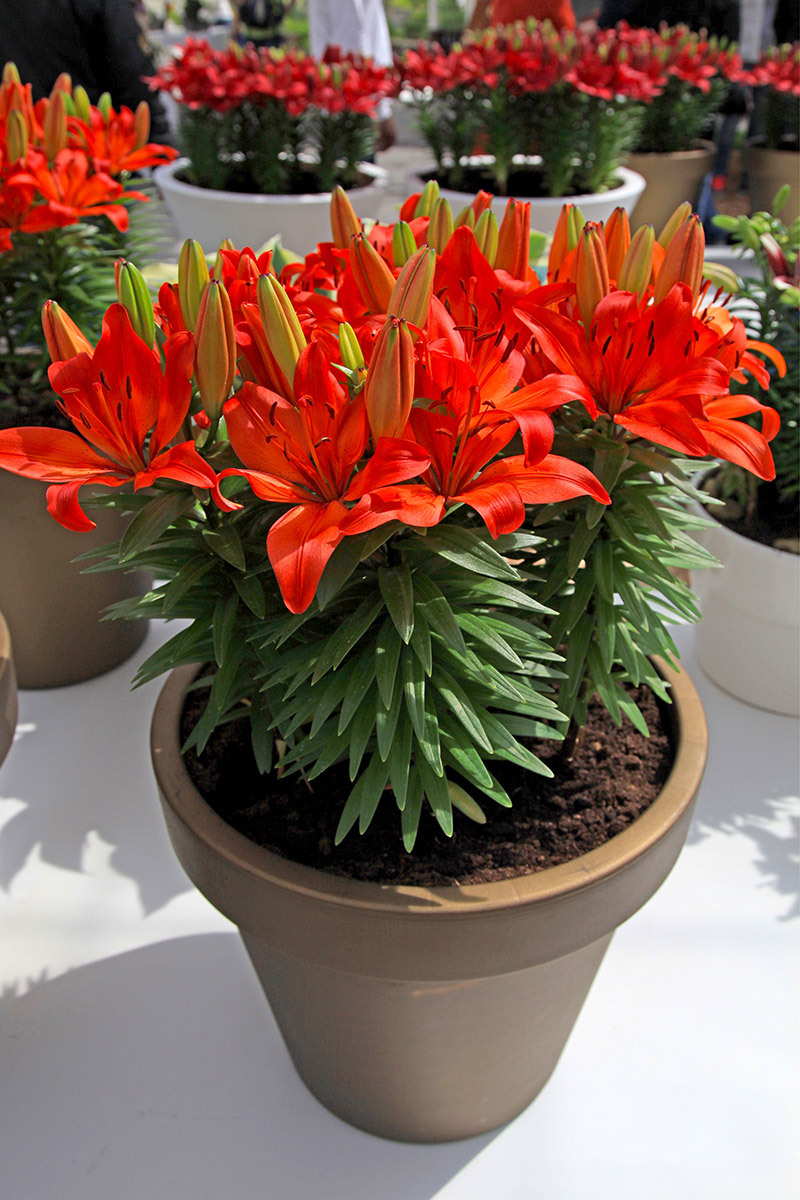Keeping Poinsettias Fresh and Vibrant
Posted on 02/07/2025
Keeping Poinsettias Fresh and Vibrant: The Ultimate Guide
Poinsettias are a beloved holiday plant that add a splash of brilliant color to homes and offices during the festive season. Their lush green leaves and vivid red bracts are iconic, yet many people struggle with keeping their poinsettias fresh and vibrant long after the holidays. Whether you're a novice gardener or a seasoned plant enthusiast, understanding the essentials of poinsettia care can mean the difference between a fleeting display and months of lush beauty.
This comprehensive guide will provide you with actionable tips and insights for maintaining poinsettia health, prolonging their visual appeal, and ensuring your plants remain vibrant through the season--and beyond!

Understanding Poinsettias: A Brief Background
Before diving into the specifics of care, it's essential to understand a little about the plant itself. Poinsettias (Euphorbia pulcherrima) are native to Mexico and Central America where they grow as shrubs, often reaching up to 12 feet tall! Their colorful "flowers" are actually bracts--modified leaves--while the true flowers are small, yellow, and found at the center of the bracts.
In the wild, poinsettias thrive in warm climates with indirect light, high humidity, and well-drained soil conditions. Mimicking these conditions indoors is the key to keeping poinsettias vibrant and attractive.
How to Choose a Healthy Poinsettia
- Inspect the foliage: Look for plants with dark green leaves and completely colored bracts. Avoid plants with yellowing leaves or wilted stems.
- Check the roots: Gently lift the plant to inspect the roots. White, firm roots are a sign of good health.
- Assess the flowers: The yellow buds (cyathia) at the center should remain tight and not be shedding pollen. Shed pollen indicates an older plant that may not last as long.
- Avoid chilled plants: Poinsettias are sensitive to cold. Never buy plants that have been displayed outdoors or subjected to drafts.
Tip: Always transport your poinsettia home in a protective sleeve or bag if the weather is cold.
Essential Care Tips for Keeping Poinsettias Fresh and Vibrant
Once you've selected a healthy poinsettia, proper care is paramount for keeping poinsettias looking fresh and colorful. Here's how to create an ideal environment for prolonged bloom:
1. Light Requirements
Poinsettias love bright, indirect light. Place your plant near a sunny window where it receives at least 6 hours of filtered sunlight each day. However, avoid direct sunlight which can scorch the leaves and bracts.
- Ideal spots: East or south-facing windows with sheer curtains
- Avoid: Placing poinsettias on cold windowsills or in dim corners
2. Temperature and Humidity
Consistent temperature is crucial for prolonging the freshness of your poinsettia. Keep your poinsettia in an environment between 60?F and 70?F (15?C to 21?C) both day and night.
- Avoid cold drafts: Such as those from windows, doors or air vents
- Keep away from heat sources: Such as radiators, fireplaces, or appliances, which can rapidly dry out the plant
- Humidity: Poinsettias thrive in moderate humidity. If your indoor air is dry, especially in winter, use a humidifier or place the pot on a tray with moistened pebbles (but not in standing water).
3. Watering Your Poinsettia Correctly
Overwatering is the most common enemy of vibrant poinsettias. It's crucial to strike the right balance:
- Check the soil: Water only when the surface feels dry to the touch.
- Water thoroughly: Give enough water so that some drains from the bottom (discard excess water in the saucer).
- Never let the plant sit in water: This can cause root rot and yellowing leaves.
- Use room-temperature water: Cold water can shock roots.
Avoid both over- and under-watering. Consistent moisture--not soggy, not dry--is key for long-lasting poinsettias.
4. Fertilization: When and How?
If you're keeping your poinsettia past the holiday season, fertilize lightly after the bright bracts have faded, usually starting in late winter or spring.
- Type: Use a balanced, all-purpose houseplant fertilizer (e.g., 20-20-20), diluted to half strength.
- Frequency: Once every 3-4 weeks is sufficient.
- Do not fertilize: While the plant is in peak bloom, as this can cause bract drop.
5. Avoiding Common Poinsettia Problems
To keep your poinsettia's color bright and leaves lush, watch for these common issues:
- Yellow leaves: Often due to overwatering or cold drafts.
- Wilting: May be from underwatering or root rot.
- Leaf drop: Can result from sudden temperature changes or poor lighting.
- Pests: Rare, but sometimes whiteflies or spider mites appear. Use insecticidal soap if needed.
Tip: If your poinsettia's leaves become sticky, it's likely from pests and may need prompt attention.
Extending the Bloom: Strategies for a Longer-Lasting Display
Many people wonder how to make poinsettias last longer than a few weeks. While the bracts are not true flowers, they usually retain their color for two to three months with the right care. Follow these advanced steps to keep your poinsettia vibrant and healthy well into the new year:
1. Maintain Environmental Stability
Sudden changes in light, temperature, or humidity are among the main causes of bract drop and fading. To maintain poinsettia color:
- Water and fertilize on a regular schedule.
- Avoid moving the plant around your home.
- Use a pebble tray or humidifier during dry winter spells.
2. Remove Fading Bracts and Leaves
Gently pinch off any fading bracts or yellowing leaves. This helps the plant focus its energy on healthy, colorful growth and can prevent disease.
3. Repotting for Year-Round Poinsettia Care
If you're committed to enjoying poinsettias year after year, consider repotting your plant in early spring:
- Move the plant to a slightly larger pot with fresh, well-draining soil.
- Cut back the stems to about 6 inches to foster bushier growth.
- Return the plant to bright, indirect light and resume standard care.
Encouraging Re-bloom for Next Season
With patience and care, it's possible to get your poinsettia to re-bloom the following holiday season. Here's a basic timeline for success:
Spring and Summer
- Continue to water and fertilize the plant as described above.
- Move outdoors after the last frost if possible--poinsettias love summer air, but keep them shaded from harsh afternoon sun.
- Pinch back new shoots in early summer to stimulate bushiness.
Fall: Initiating Flowering
Poinsettias require a strict photoperiod--that is, a period of darkness--to set colorful bracts for the holiday season.
- Starting in mid to late September, give your plant 14-16 hours of complete darkness each night (by placing a box or bag over the plant, or locating it in a light-free room).
- Continue this routine for 8-10 weeks, alongside regular daylight exposure during the day.
- When bracts begin to show color, resume normal daylight care. Patience is needed, but the reward is a stunning rebloom!
Creative Ways to Display Fresh Poinsettias
Keeping your poinsettias fresh and vibrant is not just about plant health; it's also about creating stunning displays. Here are a few ideas:
- Group arrangements: Place several pots in varying sizes together for a lush statement.
- Decorative pots and covers: Use color-coordinated containers or festive baskets for a cohesive look.
- Combine with other seasonal plants: Poinsettias pair beautifully with evergreens, cyclamen, and amaryllis.
- Table centerpieces: A single, healthy poinsettia in a standout pot can brighten any table.

Frequently Asked Questions: Poinsettia Freshness and Care
Are poinsettias poisonous?
Contrary to popular myth, poinsettias are not highly toxic to humans or pets. Ingesting large quantities may cause mild stomach upset, but the risk is minimal. Still, keep them out of reach of pets and young children.
Can poinsettias survive outside?
In USDA zones 9-11, poinsettias can survive outdoors year-round. In cooler climates, treat them as houseplants, or move them outside in summer as described above.
Why are my poinsettia's bracts turning green?
Bracts may fade or turn green as part of the plant's natural cycle after the initial display. Improper light or temperature can also cause this.
Final Thoughts: Enjoying Long-Lasting, Fresh, and Vibrant Poinsettias
Keeping poinsettias fresh and vibrant doesn't require magic--just attentive, knowledgeable care. From choosing a healthy plant and providing the right environment to watering, feeding, and initiating re-bloom, each step brings you closer to stunning, long-lasting displays.
Whether you enjoy poinsettias for the holidays or as year-round companions, these timeless plants can brighten your home with bold colors and festive cheer. Follow the expert tips above and share your vibrant poinsettia success with friends and family!
Ready for lush, long-lasting poinsettias? Start today, and enjoy their beauty throughout the season and into the new year.
Latest Posts
The Romantic Allure of Valentine's Red Roses
Discover the Top 10 Office Plants That Require Minimal Maintenance
Keeping Poinsettias Fresh and Vibrant
Explore the Significance of Your Birth Flower and Its Messages





